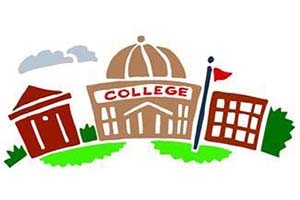Do Colleges Deliver On Career Preparation?
How to improve perceptions and deliver on the promise of a valuable college education is one of the biggest debates in higher education today. A recent article in The Chronicle of Higher Education, In An Evolving Career Landscape, How Should Colleges Prepare Students? (see notes section below for full article,) has prompted The Melior Group to take a deeper look at this recurring and multi-layered topic.
“Closing the Perception Gap,” looks at several improvement scenarios that involve a strategic mix of programmatic, communication and partnership initiatives that will allow institutions to deliver on a series of pre-set expectations.
Through our experience working with employers and educational institutions, The Melior Group has learned that perceptions around this topic are often off the mark. That is to say, while it’s true that there is a gap between graduate preparedness and employer needs, this gap is not always as big as has been often stated in the media and there are ways to improve perceptions. While there is no single solution, The Melior Group has identified several key focus areas that can assist colleges and universities to improve the perception that an investment in higher education will in fact support a successful career.
Part 1: Messaging and Expectations: What Signals Are Being Sent Out?
In our previous blog posts and articles published nationally (see notes section below), The Melior Group has discussed work that has helped clients discover implementation strategies to close this perceived gap and improve communications about the overall value of a college education.
Included here are several of the many recent efforts that clients have taken to successfully use research to improve their reputation of delivering on the promises they make to constituents.
Track success and talk about it
Many schools do not meaningfully track graduate successes or they fail to act on the limited information they do track. While there are standardized alumnae surveys that track career type, salary and promotions at the 5-year mark post graduation, this is merely a good first step. The next step is to communicate successes to area employers, prospective students, parents and the community at large.
Additional measures to explore include:
- Are employers pleased with the caliber of the graduates hired?
- Are alumni sufficiently satisfied with their experiences such that they will recommend their alma mater?
- What resources, workshops or internship programs directly contribute to hires?
Deliver a consistent brand message but focus on segmented priorities
A high-level brand message needs to consistently cross all channels and segments, but building action-oriented communications typically requires a different strategy for each audience. Understanding what each group is looking for and effectively implementing and can go a long way to closing the perception gap.
Questions to consider in developing a strategy include:
- How, when and what is being communicated to the public and to what end?
- Is there a disconnect between the messaging to parents/students/employers? How can this be addressed?
- Are communications about the caliber of graduates effective? Where and how should information be shared about graduation rates to trigger more applicants?
- Are alumnae needs supported and is an effort in place to transform them into ambassadors that will help promote the institution?
- Is evidence of workforce preparedness clearly communicated to prospects?
The Melior Group works with large research institutions, regional public universities and small private colleges to improve the perception of their schools’ effectiveness by discovering where gaps in perception exist and drilling into how promises are perceived.
For more information or to request a proposal:
Please contact Elizabeth Foley at [email protected] or (215) 545-0054
NOTES:
Referenced Article: Chronicle of Higher Education Article
In An Evolving Career Landscape, How Should Colleges Prepare Students
Melior Article: Many points made by The Melior Group President and Founder, Linda McAleer, in her article published in University Business is still relevant today.
Meeting Today’s Workforce Needs
Recent and Relevant Melior Blog post:
Can Traditional Higher Education models survive 21st Century Expectations



